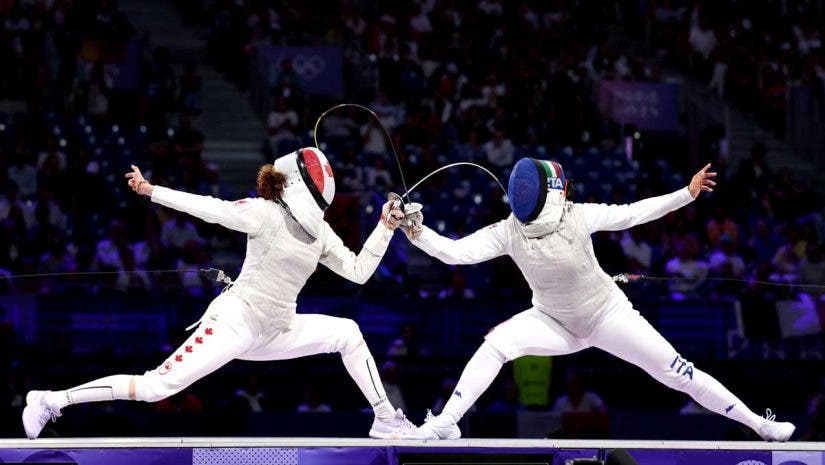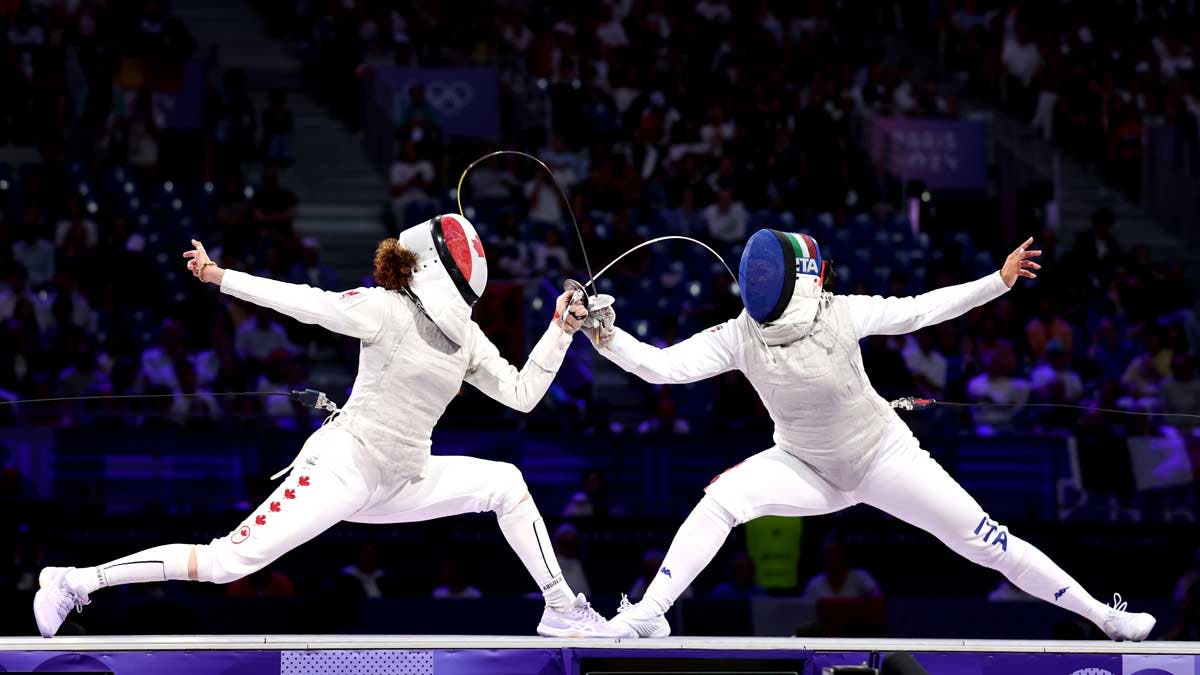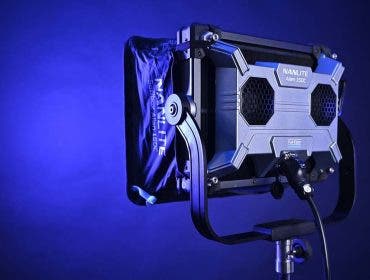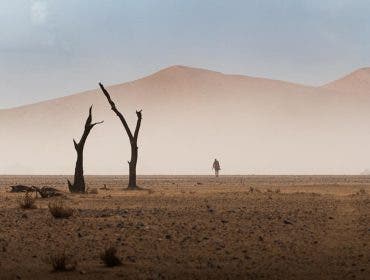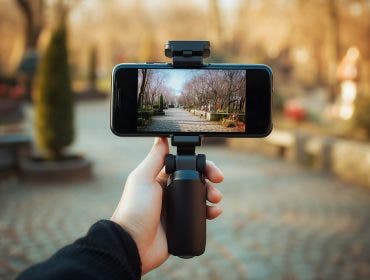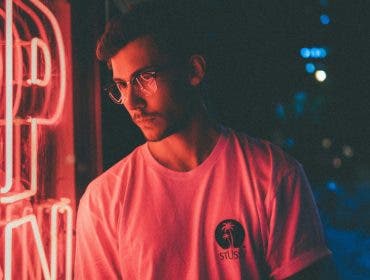This was the first time I photographed Olympic fencing. I have seen the photos from the Olympics at fencing over the years and always wanted to try it. I finally had this opportunity and spent two full days at the iconic Grand Palais—an extremely picturesque venue.
A Return of The Fans
Being in Paris for the 2024 Olympics was absolutely amazing. The last two Olympics I covered were conducted through COVID protocols. Everyday wearing a mask, daily Covid testing, and working in a controlled bubble was very difficult mentally. There were no fans in Tokyo or Beijing, which was really strange and quite depressing for a major event like the Olympics.
Having the fans back in this remarkable city of Paris made all the difference in the vibe of this year’s Games. Of the 15 Olympic games I have covered, this one was easily in my top two favorites. The other favorite was London in 2012. The energy of the crowd was felt everywhere I went. Every session was sold out. The fans were so excited and cheered their countries on and cheered all the athletes on extensively. The weather, for the most part, was very nice.
Mostly Cooperative Weather at the Paris 2024 Olympics
There were a few very hot days, but given that we are in the summer here, that was to be expected. The only downer was that during the Opening Ceremony, it down poured rained the whole day. We were all in the rain for about 12 hours. We had to get to our positions early, so we had to just sit there and take it if you were outside, which I was. Other than that day, everything was really great.
Work That You Love
My approach to covering the Olympics is pretty much the same each time I go. The only difference is that this time, I wanted to make sure I tried to enjoy myself and try to appreciate seeing my friends and coworkers from around the world more than ever. It is a privilege and a gift to be able to cover an Olympic Games—it’s the pinnacle of sports photography.
In the past, I tended to get upset or down if I had a bad day with photos or if something happened that would get me down. I was determined to work hard, enjoy the atmosphere, and appreciate every day. This mindset going into the Games helped me tremendously. It’s important to be prepared to be in all kinds of weather, have all your photo gear packed, and if you think you will need it, then bring it. I typically arrive early to an event, so I am ready to go when the competition begins.
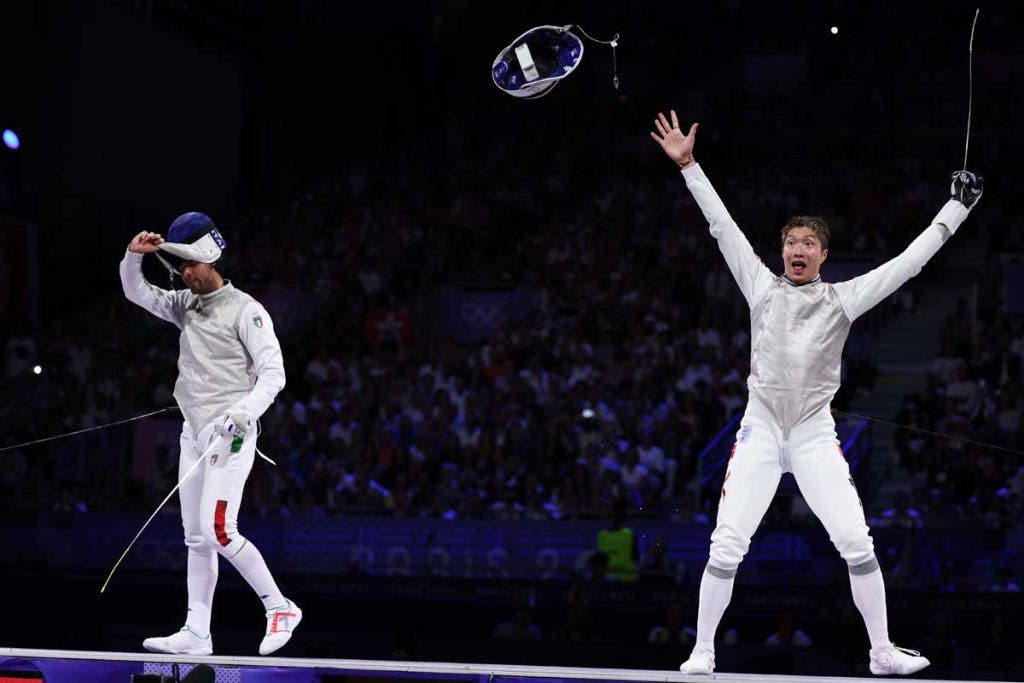
Photography is an Endurance Sport
Prior to the Olympic Games, I try to exercise and get myself physically ready. It is a grueling physical and mental journey covering the Olympics over 16 days straight. I will have spent a total of 28 days in Paris covering previews and setups for the events I am covering. It’s very long days with little breaks, and you need to be in the right mindset for this type of work. You just need to push yourself every day and make sure you get as much sleep as possible, as well as eat and hydrate properly.
As a sports photographer, this is the ultimate test for you. You are working with and against the best sports photographers in the world, and you want to get the best pictures you can. There is no place else I would rather be than at the Olympics. Events go on every day from morning till late at night. Every day, there are gold medals to be won and lost. T
Transportation and Gear at the 2024 Paris Olympics
Transportation for me was using every type of vehicle, train, and bus I could have access to. I had a roller bag and a big backpack with me, not knowing exactly how I would be best to travel until I got to Paris. There were many steps, hustling through turnstiles and lifting on the subways and buses, so I decided to wear my backpack with about 50 lbs. of gear. I hand-carried long lenses with me in a carry case and had a pouch I wore around my neck as well. It was a lot of stuff to lug around every day, but that was what I needed to do my job.
Once I got myself to the events and settled in, I would focus on the task at hand that day. Having the crowds back made me realize how much I missed them at the Olympics. The athletes felt it, too. They thrived off the crowd’s energy, and many of the athletes engaged the crowd to cheer them on and help with the celebration and dejection. There was an electric atmosphere everywhere I went.
Challenges of Photographing Olympic Fencing?
I immediately noticed the ceiling when I walked in to scout it out before the Games started. It had a magnificent circular glass-domed roof. I thought that this would create a nice opportunity to showcase this sport in this venue and give the images a sense of place.
Typically, in past events, fencing has taken place with black backgrounds everywhere you looked. This would make clean photos of the fencers against a darker backdrop. This was not the case in Paris. The backgrounds were very tough to work with.
There were LED screens, poles, staircases, and all kinds of distracting objects in the backgrounds of the angle available to work. I tried the best I could to be patient and work in the areas I thought would produce nice, clean photos.

Long Days and The Beauty of Olympic Fencing
The fencing competition started at 9am and went on until around 11pm. Match after match, I would photograph the fencers. They were magnificent to watch. It was a wonderful dance of skilled athletes. The athletes were thinking many steps ahead against their opponents, and they reacted the same.
They were dressed in white and wore protective masks. If they scored a point, they would react, but you could not see their faces until the match was over. Many times, they would throw their masks off their faces and scream in jubilation and were very emotional later in the competition.
Changing Light Brings New Opportunities.
The medal rounds were intense. Thankfully, as the day turned into night, the backgrounds got darker, and it was easier to work on capturing standout moments. The wonderful roof became my backdrop for many of my photos. I would shoot the fencers cast against the roof with a wide-angle lens to capture the atmosphere of the place.
When we got to the medal rounds, things got really exciting. The fencers and the crowd were amped up, and the noise was deafening. I had to wear earplugs everywhere I went. It was so loud I felt the noise vibrating inside my body. The gold medal and bronze medal rounds were the best.
The winning fencers would jump in the air and throw their helmets in joy, and the losing fencers would drop to their knees in defeat. There was joy, tears, and all kinds of emotion. I enjoyed the whole atmosphere of the event.
Essential Gear for Covering the 2024 Paris Olympics
Here is a list of some of the gear I used to capture Olympic fencing. I would shoot at least 1/2000 sec and the widest aperture, usually F2.8. For cameras, I chose the Canon EOS R1 and EOS R3. For lenses, the Canon RF 10-20mm f/4.0 L IS STM Lens and Canon RF 100-300mm f/2.8 L IS USM Lens.
Writing with Light
Lighting has a lot to do with photographing Olympic fencing. During the day, the backgrounds were tough. It became messy at times, and I really had to try to avoid the distractions behind the fencers. The venue was so bright that everything in the background would show. However, when it got dark, and the light would fade from the windows of the Grand Palais, it was much easier to shoot what was happening. Having said that, the opportunity to shoot wide-angle photos of this venue showing the roof really showed how magnificent this place was and how iconic it was to have the competition in this space. It was not a traditional Olympic fencing venue, so I had to pivot and adjust according to the situation.
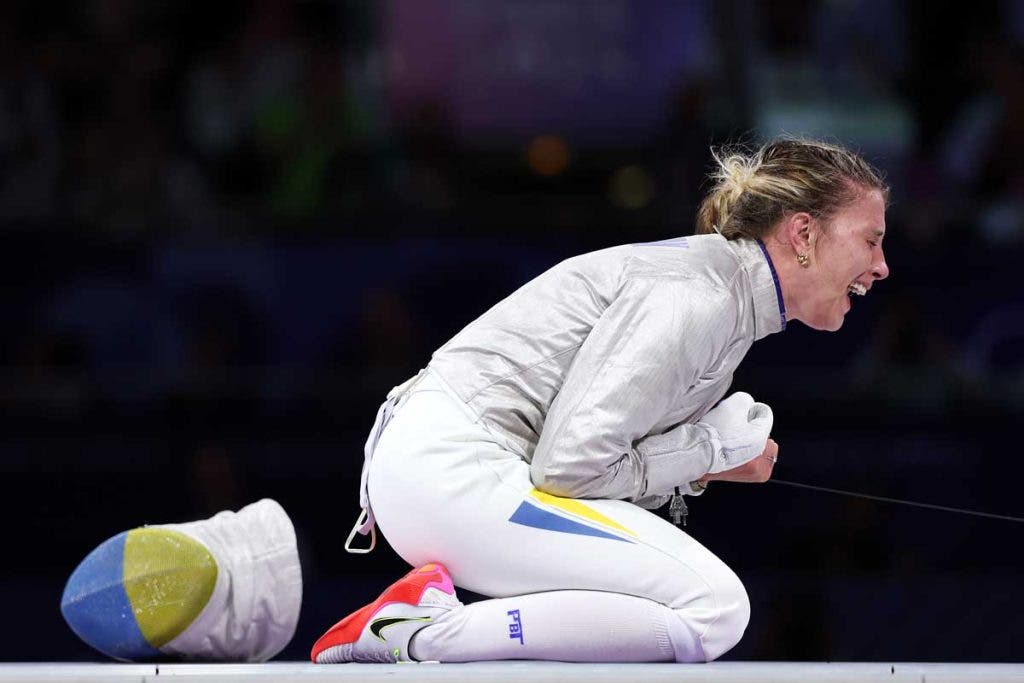
Capturing Emotion
The emotions would really flow as we got deeper into the tournament. The masks would fly off, and yelling and screaming in joy or dejection came out in the medal rounds. Fencers are very emotional athletes. I also paid attention to the fencers that lost a big match. You have to remember that they trained for this moment their whole lives, and winning a gold medal came down to whatever match they were competing in.
Many athletes may never compete in an Olympics again, so you need to be very aware of this. You are documenting history. You also may want to include the winner and the loser of a big match to tell the story in one photo. I also wanted to include the crowd in some of my photos to show that fans were back at the Olympics. I went up into the crowd and tried to include them in some wider photos.
Finding Unique Angles for Olympic Fencing
I tried to shoot according to the cleanest background. With this venue, there were a couple of spots to work from. One position was when the fencers were right in front of you. From this angle you could get the most action and reaction shots and work on a wide-angle photo showing the venue. I tried going upstairs to shoot down on the fencers, but it was not as dramatic of an angle to get the fencers.
Though it did serve to show a general view, there was another angle that was alright—it was from the side of the fencers. You could get athletes competing with one facing you, and you would get the back of the other fencer. The one good thing about this angle was if the fencer with their back facing you would celebrate, they would generally spin towards you as the coach would be in the same area where I was sitting.
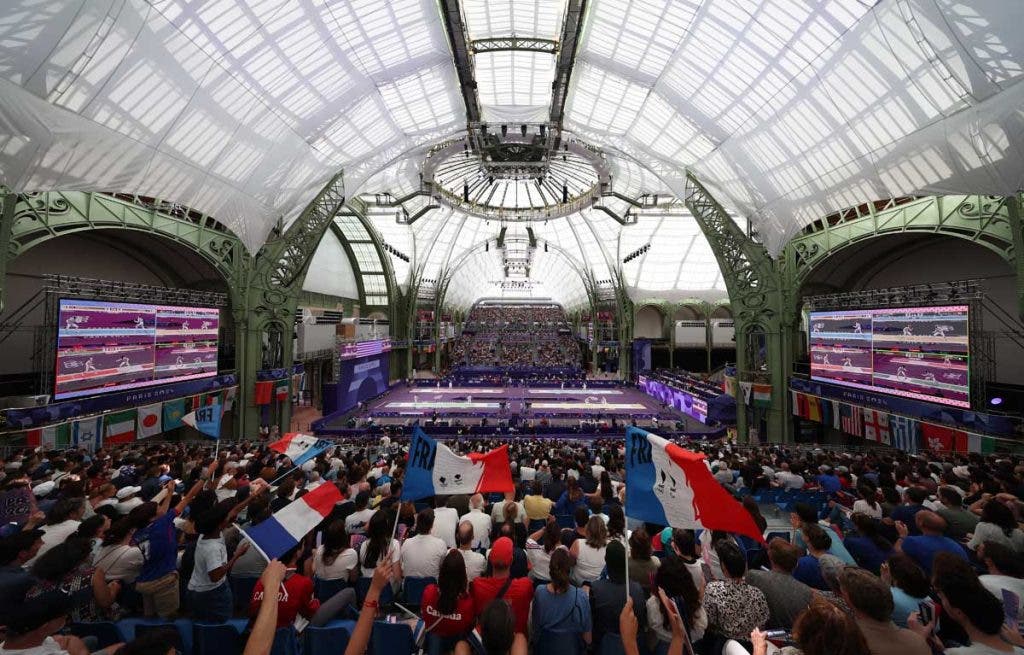
Parting Thoughts
The best thing I could tell anyone when they are walking into any situation or event is to try to keep it simple by observing where the light is coming from. Be sure to recognize what type of background you are shooting into. Also, consider how you want to compose the picture.
Be aware of every angle you can get to and make the best of the position you are in. The Olympics can be tough as you have limited space to work, and you have many photographers trying to work as well. Definitely be early to events and scout the venue ahead of time to learn where the best photo positions are.
Get to know the venue photo manager as well; they are there to help you. They know the rules and also can show you where the photo positions are. I would also say that saying please and thank you goes a long way. Respect who you are working with above all.
Featured Image: PARIS, FRANCE – JULY 28: Alice Volpi of Team Italy (R) competes with Eleanor Harvey of Team Canada during the Women’s Foil Individual Bronze Medal Bout between Alice Volpi of Team Italy and Eleanor Harvey of Team Canadaon day two of the Olympic Games Paris 2024 at Grand Palais on July 28, 2024 in Paris, France. (Photo by Al Bello/Getty Images)
